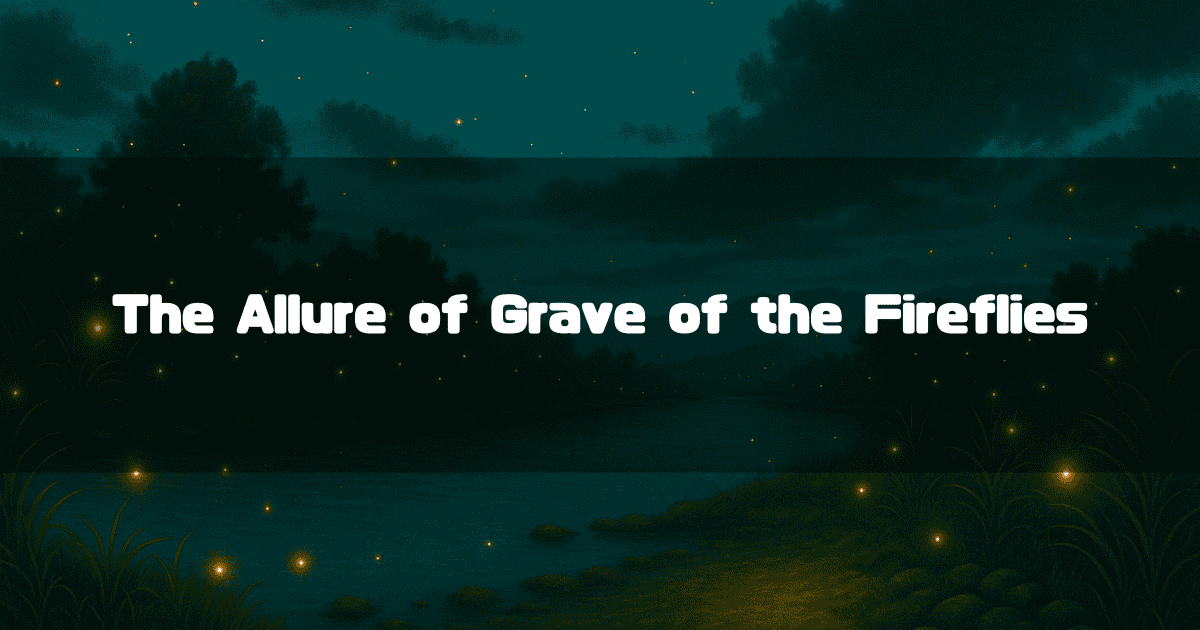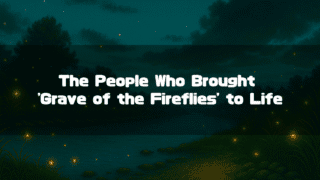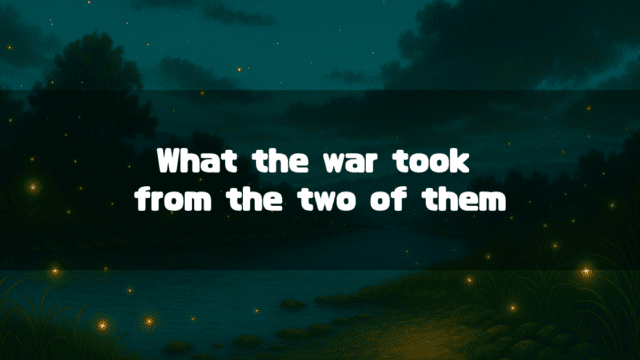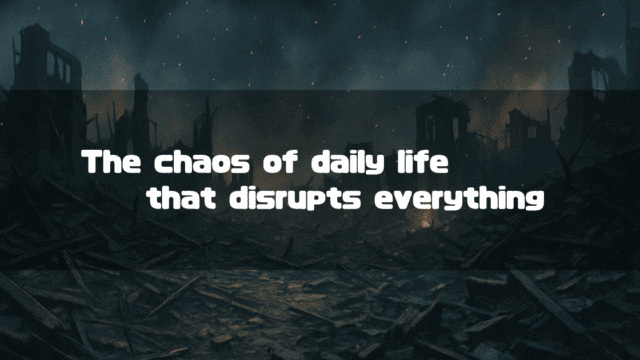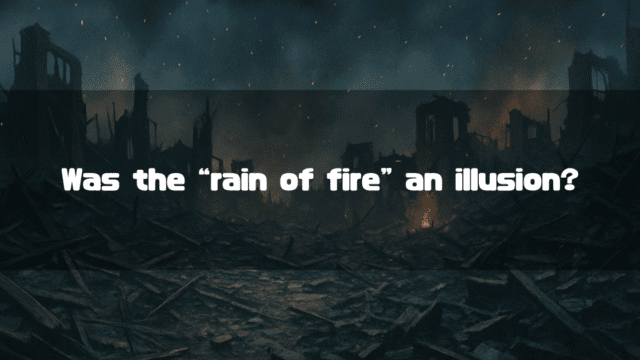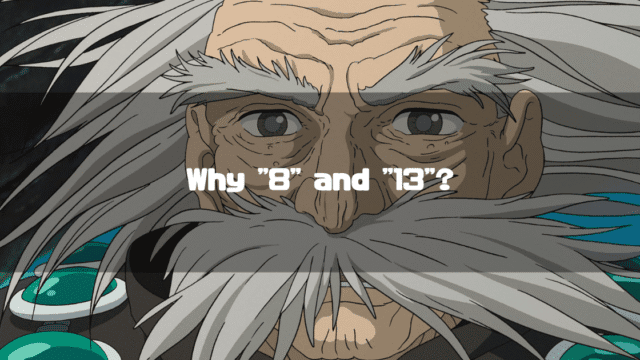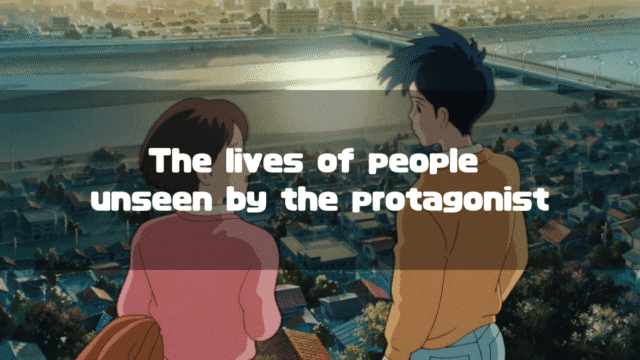「Grave of the Fireflies(Official Studio Ghibli)」 is a theatrical animated film directed by Isao Takahata, released on April 16, 1988. The original work is a novel of the same name by Akiyuki Nosaka.
I don’t remember exactly when I first saw this work, but I think it was probably when I was in elementary school and saw it on TV.
At the time, it didn’t affect me as much as I expected, and I was only shocked by the sight of Seita and Setsuko’s mother wrapped in bandages. However, this was not an issue of age but a personal one, as my acquaintances and friends said it was too painful to watch (in other words, it wasn’t so painful that I couldn’t watch).
This time, I would like to summarize the points for consideration while looking back at the synopsis of “Grave of the Fireflies,” a film that left “something” in the hearts of many people. What parts of “Grave of the Fireflies” should we have been looking at?
*This article is an English translation of the original Japanese article, “「火垂るの墓」のネタバレあらすじと考察ポイント-人物相関図付きでラストまで解説-“.
Let an AI walk you through the highlights of this post in a simple, conversational style.
- Detailed Synopsis
To summarize the plot of this work, “Seita, a 14-year-old boy, lived in Kobe with his mother and sister Setsuko, but lost his mother in the air raid of June 5, 1945, becoming a war orphan. He takes refuge in his aunt’s house, but their relationship gradually deteriorates, and Seita chooses to live in a cave with his sister. Setsuko suffers from malnutrition, but without the help of a doctor, she eventually dies of hunger. One month after Setsuko’s death, Seita also dies at a train station.” However, we will provide a more detailed synopsis and explanation of the story. - Various Points for Consideration
We will explain points for consideration such as “The conflict between Seita and his aunt,” “The real cause of Seita and Setsuko’s death,” “The reason Seita was at the train station,” “Why Seita and Setsuko Cannot Pass On,” and introduce more detailed articles (within this blog).
- “Grave of the Fireflies” Synopsis (Spoilers Ahead)
- Points for Consideration in “Grave of the Fireflies”
- The Conflict Structure of Seita and the Aunt, and My Own Feelings
- Why Did Seita and Setsuko Have to Die?
- Director Takahata’s Intention in Adapting the Story and the “Hope” Within It
- Why Was Seita Inside the Train Station?
- Why Can’t Seita and Setsuko Pass On?
- The Mystery of the Molotov Bread Basket
- It’s Better to Watch “Grave of the Fireflies” Twice
- “Grave of the Fireflies” Trivia Collection
“Grave of the Fireflies” Synopsis (Spoilers Ahead)
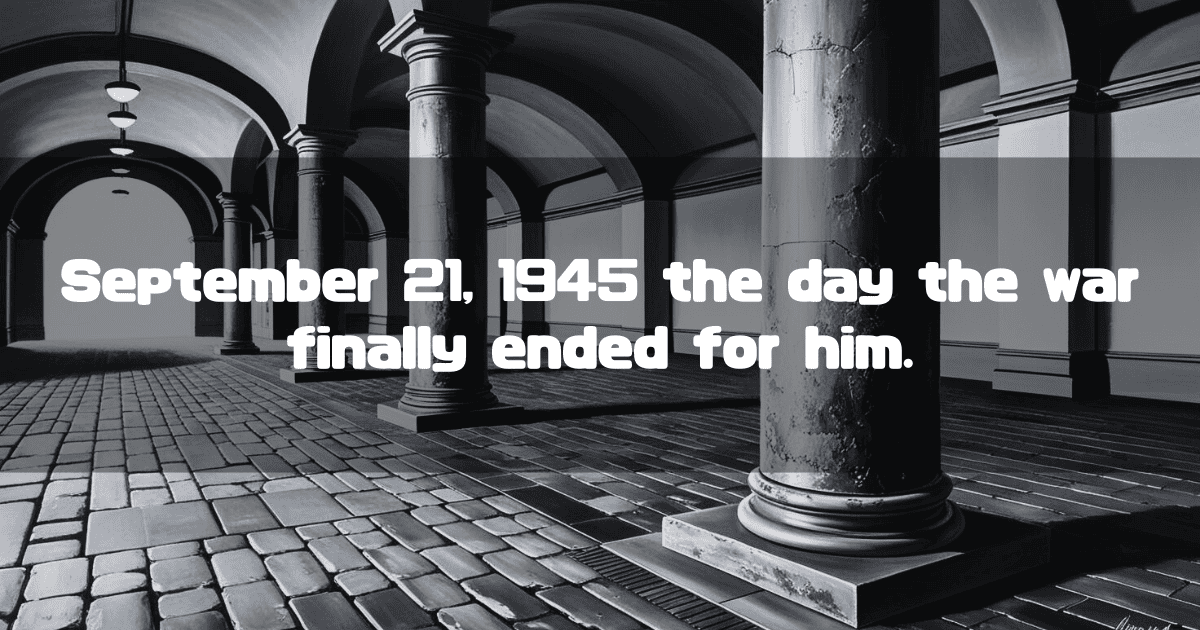
Simple Summary of Points
A brief summary of the points of the “Grave of the Fireflies” synopsis is as follows:
-
The Beginning of the Catastrophe
The mother loses her life due to a fierce air raid during the war, and the family’s peaceful daily life collapses in an instant. -
Desperate Isolation
Their father is away at war, the family’s support is cut off, and Seita and Setsuko are left in deep solitude. -
A Temporary Refuge
Seita and Setsuko are temporarily taken in by their aunt, but they face a difficult situation and cold treatment due to wartime poverty. -
A Desperate Struggle for Survival
Having decided to live alone with his sister in a cave, Seita struggles to survive amidst food shortages and hardships while desperately protecting her. -
A Tragic End
As a result, in the harsh reality, the siblings suffer from severe loneliness and hunger, meeting a tragic fate.
Story Explanation
If I were to describe “Grave of the Fireflies” in one sentence, it would be “A work depicting the tragedy that befell a young brother and sister at the end of the war.“
The attitude of Seita (the older brother) towards the aunt who took them in after their mother’s death, and the right or wrong of Seita starting a life alone with Setsuko (the younger sister), often seem to be the subjects of debate regarding this work.
According to director Takahata’s testimony (as told in the bonus features of the Blu-ray), there were many sympathetic reactions to Seita at the time of the film’s release. However, in modern times, it feels that the argument blaming Seita is more common.
To once again consider the evaluation of his actions, let’s follow the synopsis of “Grave of the Fireflies” in a little more detail.
The Kobe Air Raid
The protagonist of the story is a 14-year-old boy named Seita. His father is a Navy captain, and he lived in Kobe with his mother and 4-year-old sister, Setsuko.
June 5, 1945. Kobe, where they lived, is hit by a B-29 air raid.
They began to evacuate according to the air-raid warning, but Seita and Setsuko, whose mother had evacuated earlier, ended up losing her and becoming war orphans.
The two took refuge at their aunt’s house in Nishinomiya, as they had “promised” to do in such an emergency. However, Seita could not bring himself to tell his sister Setsuko that their mother was already dead.
The Plague God Playing the Organ
The aunt’s husband had already passed away, and in the house lived her daughter and a young man who was a boarder engaged in labor service.
Things were fine at first, but the relationship between the aunt and Seita’s family, who did not go to school or work, gradually deteriorated.
Then, triggered by the fact that the rice and other supplies they had left in the garden of their house during the air raid became the “common property” of the aunt’s household, Seita began to “live separately within the family.” The funds for this were the 7,000 yen his mother had saved for them in case of an emergency.
Around that time, Seita was severely scolded by his aunt for playing the organ to entertain Setsuko. She said that doing such a thing during the war would draw criticism from the neighbors.
Finally, she blurts out to Seita and Setsuko, “It’s like a plague god has wandered in.”
After this incident, Seita makes a certain decision.
Although Seita may have been at fault in his relationship with his aunt, it might have been unavoidable considering he had lost his home and mother in an air raid.
On the other hand, for the aunt who used the expression “plague god,” it might have been nothing more than something said “in the heat of the moment.”
At Ages 4 and 14
Seita leaves his aunt’s house with Setsuko and begins living in a nearby dugout shelter. Although it was inconvenient, they had a free life there, undisturbed by anyone.
Around that time, he learns that Setsuko had already been told by their aunt about their mother’s death. Setsuko’s fussing every night might have been not only from fear of the air raids but also from the sorrow of losing her mother.
Setsuko, who had been living desperately while holding the sorrow of her mother’s death, saw her symptoms of malnutrition, which had been visible for some time, worsen steadily.
Even when they saw a doctor, he just said, “Get some nourishment,” and wouldn’t take them seriously.
The End of the War
Seita, who had been cut off from all information by leaving his aunt, happened to learn of the end of the war and Japan’s defeat at a bank where he went to withdraw money.
And Setsuko had also reached her limit.
After eating a bite of the watermelon Seita had bought, Setsuko took her last breath.
Setsuko’s body was respectfully cremated by Seita alone. He placed a part of her ashes in the candy tin she loved so much.
September 21, 1945. Seita, looking like a ragged cloth, leaned against a pillar in the train station and took his last breath.
Points for Consideration in “Grave of the Fireflies”

From here, I will summarize the points for consideration for the work “Grave of the Fireflies.” My personal answers regarding these points are summarized on the following page:
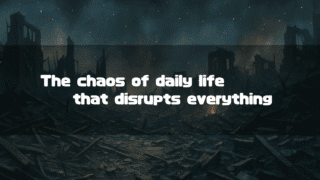
What do you all think?
The Conflict Structure of Seita and the Aunt, and My Own Feelings
The most fundamental point when discussing “Grave of the Fireflies” is, of course, “the conflict structure between Seita and his aunt.”
However, in considering that structure, I think the state of one’s own feelings at the time, specifically “which one am I more sympathetic to,” is the most important thing.
This is because, if you take an objective analytical stance, it’s possible to sympathize with both.
In modern times, many people sympathize with the aunt, and the feeling of blaming Seita would come first (as it does for me), but according to an interview with director Takahata included in the Blu-ray of “Grave of the Fireflies,” at the time of the film’s release, there were many sympathetic reactions to Seita.
Perhaps many people saw it as the last-ditch “rebellion” of a child who is an overwhelming underdog in the chaos of war, but director Takahata himself said that he was surprised by that reaction.
In any case, it shows that the feeling of being sympathetic to the aunt is not absolute.
If that’s the case, rather than looking at that conflict analytically, it would be more important to ask oneself the question, “Why do I end up siding with that person?” and to put the answer into words.
A book report on “Grave of the Fireflies” is something that school teachers would love to make students write, but I think it’s the most important thing when thinking about this work. There can be no analysis without personal feelings.
Why Did Seita and Setsuko Have to Die?
Once you have your own feelings about the “conflict between Seita and his aunt,” the next question would be, “Why did Seita and Setsuko have to die?”
Of course, I think there is the way of saying and thinking that it was “because Seita was selfish and stupid.“
However, on top of that, I think it’s also important to think of that work as a “personal matter.”
I mean, Seita was 14, you know? Can we really blame him that much for his rash act of leaving his aunt’s house and for letting Setsuko die?
Well, maybe we can, but by finding the identity of what killed Seita and Setsuko in something other than Seita himself, couldn’t “Grave of the Fireflies” become a problem for us living today?
Director Takahata’s Intention in Adapting the Story and the “Hope” Within It
Now, “Grave of the Fireflies” is an extremely tragic story. There is almost no salvation.
Why did director Takahata need to make such a story? This movie is based on a novel by Akiyuki Nosaka, so if he thought it was wonderful, he could have just promoted the novel.
But director Takahata did not do that; he chose the path of adapting the gruesome story into a film himself. Why was that?
And, is there nothing in this story that can be called “hope”?
I believe there is just one thing in this work that depicts “hope” (or a “wish”). This is, of course, my own arbitrary interpretation, but I truly believe it is depicted.
What is it and where is it depicted? I think it’s worth thinking about.
Why Was Seita Inside the Train Station?
September 21, 1945, is the anniversary of Seita’s death, but at that time, he was for some reason inside a train station. Setsuko’s date of death was August 22, so he survived for a month after her death, but the place where he met his end was not the dugout where he lived with Setsuko.
In terms of visual expression, it would have been more “impactful” for Seita to die in the dugout just like Setsuko, but for some reason, Seita was in the train station.
Why could that be?
I personally believe it points to an important aspect of watching the movie “Grave of the Fireflies.”
The above are the points of consideration that I personally think of. I believe there are other things to consider, such as those related to animation expression, but in a way, you could also say this is my limit.
As I mentioned above, I have summarized my thoughts on the points of consideration compiled here in the following article:

Please give it a read when you have a free moment.
Why Can’t Seita and Setsuko Pass On?
“Grave of the Fireflies” begins with the appearance of Seita and Setsuko’s ghosts and ends with a view of a modern cityscape that Seita gazes upon while Setsuko sleeps. In other words, this means Seita and Setsuko continue to wander this world as ghosts.
It’s somewhat understandable that Seita and Setsuko might not be able to pass on due to lingering regrets from their deaths. However, the crucial point is that when they are reunited as ghosts at the start of the story, they show radiant smiles.
There’s a definite sense of unease seeing those who died tragically appear as ghosts with such fulfilled expressions.
Why are they unable to pass on, continuing to wander this world as ghosts to this day? I have summarized my thoughts on this point in the following article:

What do all of you think is the reason they cannot pass on?
The Mystery of the Molotov Bread Basket
The beginning of “Grave of the Fireflies” depicts the great air raid on Kobe, where a large number of incendiary bombs are shown being dropped.
Director Isao Takahata experienced an actual air raid in Okayama when he was 9 years old, and he attempted to accurately represent the “rain of fire” described by many air raid survivors through animation.
However, an interview with an expert from the Self-Defense Forces led to a problem. According to the expert, “mid-air ignition of incendiary bombs is impossible.”
So, was the “rain of fire” falling from the sky that Director Takahata and many other air raid survivors saw a phantom? Or was the Self-Defense Forces expert wrong?
The following article explains a tentative “answer” to this mystery:

It’s become a rather interesting mystery surrounding the structure of incendiary bombs.
It’s Better to Watch “Grave of the Fireflies” Twice
“Grave of the Fireflies” is not a movie you watch over and over with excitement. I think many people watch it only once and think about “Grave of the Fireflies” based on that single memory, but personally, I recommend watching it one more time.
The reason is that if you watch it a second time, I think you’ll be able to see that Seita’s appearance at the start of the story is completely different from the Seita in your memory.
At the very least, he is not the kind of boy who would spend all day sleeping at his aunt’s house. We should definitely think that something happened to Seita.
I have summarized my personal thoughts on this matter in the following article:

It’s not a movie to be watched three or four times, but I think there is meaning in making the effort to watch it a second time to try and empathize with the protagonist Seita’s emotional wounds.
“Grave of the Fireflies” Trivia Collection
In creating the article for “Grave of the Fireflies,” I consulted various materials. I’ve summarized the trivia and fun facts I came across—things you don’t necessarily need to know—in the following article:
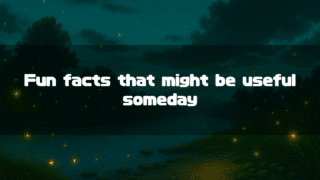
You might just find a tidbit you can share with someone tomorrow.
About the Author
Recent Posts
- 2025-09-16
Maleficent: Full Synopsis and Analysis – A Tale That Complements and Corrects the “Questionable Points” of Sleeping Beauty - 2025-09-15
An Analysis of Disney’s “Sleeping Beauty”: Plot Spoilers, Its Enduring Charm, Lovable Nitpicks, and Differences from the Original Tale - 2025-09-06
The Boy and the Heron: Characters, Voice Actors & Analysis - 2025-09-06
The Boy and the Heron: Full Synopsis & Analysis (Spoilers Explained) - 2025-09-06
The Boy and the Heron: The Amusing “Fraud” Legends of Toshio Suzuki, the Model for the Gray Heron – The History of the Masterful Skill that Supported Studio Ghibli –

